Search
Did you mean: Thugga?
Search Results

Definition
Sumerian Language
The Sumerian language was spoken in southern Mesopotamia before the 2nd millennium BCE and was the first language to be written in the cuneiform script. It is an isolate language meaning we know of no other languages that relate to it ancestrally...

Definition
Code of Hammurabi
The Code of Hammurabi was a set of 282 laws inscribed in stone by the Babylonian king Hammurabi (r. 1795-1750 BCE) who conquered and then ruled ancient Mesopotamia. Although his law code was not the first, it was the most clearly defined...

Article
Ten Ancient Mesopotamia Facts You Need to Know
Mesopotamia is the ancient Greek name (meaning “the land between two rivers”, the Tigris and Euphrates) for the region corresponding to modern-day Iraq and parts of Iran, Syria, and Turkey. It is considered the “cradle of civilization” for...
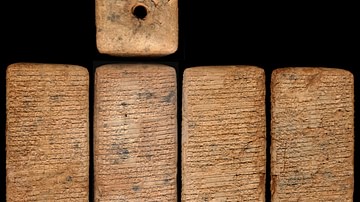
Article
Kesh Temple Hymn
The Kesh Temple Hymn (c. 2600 BCE) is the oldest work of literature in the world, sometimes referenced as the oldest extant religious poem. It is a Sumerian praise song to the goddess Ninhursag and her temple in the city of Kesh, composed...

Article
Sargon and Ur-Zababa
Sargon and Ur-Zababa is a Sumerian poem, date of composition unknown, relating the rise to power of Sargon of Akkad (r. 2334-2279 BCE), founder of the Akkadian Empire. The work is classified as a Mesopotamian folktale, relying on motifs such...

Image
Interior, Gold Earring from Ur III
The interior hollow surface of the earring. Note how the carved cuneiform signs appear on this side and how the goldsmith joined the “lunar-shaped” segments of the earring. The cuneiform text is read vertically, from the upper surface downwards...
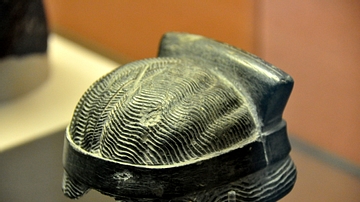
Image
Stone Hair and Headdress of the God Lamma
On the back of this piece, there are cuneiform inscriptions that mention that this headdress was commissioned by a Bau-Ninam on behalf of King Shulgi of Ur. It is most likely that this headdress was to be put on the god Lamma. Neo-Sumerian...
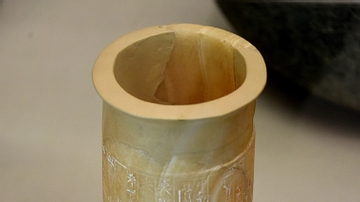
Image
Cylindrical Calcite Jar from Ur
This jar was dedicated to Shulgi, king of Ur III dynasty, by the priestess Shuqurtum. There are two incised channels at the upper half; between them, the cuneiform inscription was placed. The inscription also curses anyone who tries to deface...
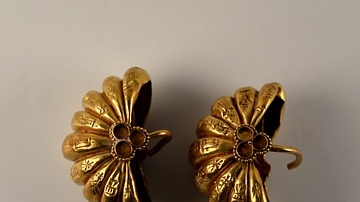
Image
Side View, Gold Earrings, Ur III
These are the upper surfaces of both earrings, with their concavity facing right. Note that the cuneiform signs are identical on the corresponding sides. A pair of gold earrings, 24 carats, approximately 48 grams. Gift from Shulgi to a chief...
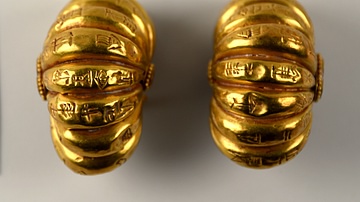
Image
Cuneiform on Gold Earrings from Ur III
Both earrings are placed in a mirror-image position, with the lower surfaces facing each other. Each earring is composed of nine lunar-shaped segments forming a flattened half- ball. The cuneiform signs run vertically from above downward...